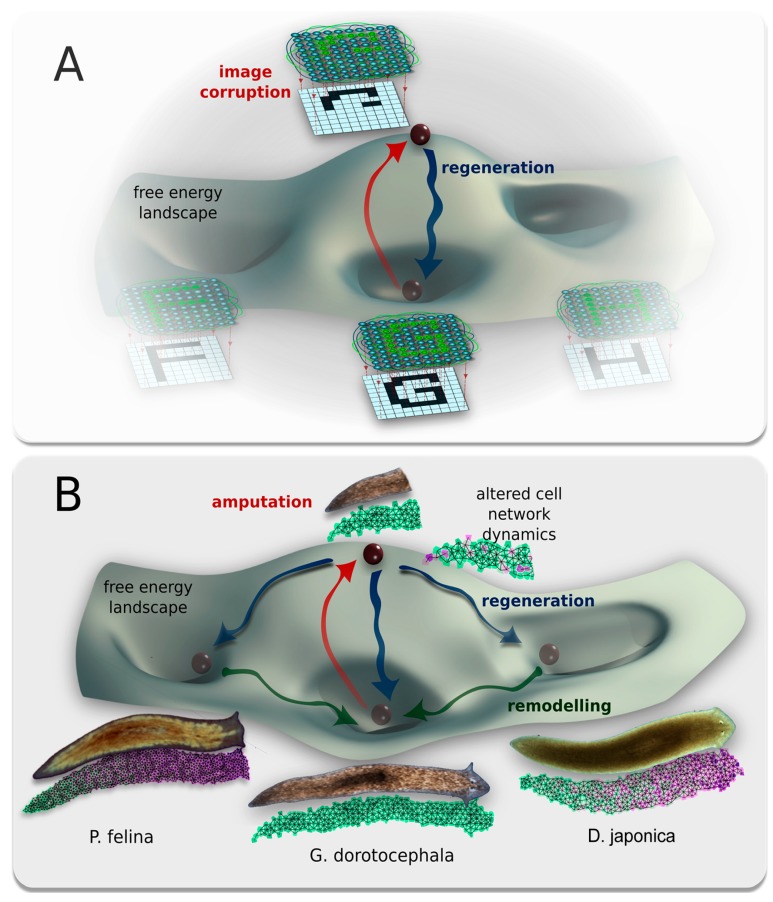Figure 9.
A conceptual model of shape change driven by physiological network dynamics. Planaria regeneration parallels classical neural network behavior; both can be described in terms of free energy landscapes with multiple attractor states. (A) Behavior of a classical Hopfield neural network trained to reproduce three types of patterns, in this case shapes of the letters “F”, “H”, or “G”, which are the three stable states of the network’s free energy landscape. The state of the Hopfield network’s nodes directly relate to the brightness of pixels on a display, generating output. Perturbation of the network from a stable state (red arrow) by deleting (damaging) part of the pattern is akin to moving a ball to an unstable point on the free energy landscape, and leads to regeneration of the closest learned attractor state (blue arrow). In this, such networks’ well-known ability to implement memory is analogous to regenerating organisms restoring a specific target morphology upon damage; (B) The parallel concept of planaria regeneration into head shapes of one of three different species, which are attractor states of the free energy landscape. Outcome morphology is driven by the dynamic outputs of physiological cellular network. Amputation (red arrow) is akin to moving the system to an unstable point on the free energy landscape. Normal regeneration would return the system to its main attractor, but altering cell network dynamics via gap junction blockade allows for regenerative transitions (blue arrow) to alternative local minima, corresponding to morphospace regions normally occupied by P. felina and S. mediterranea worms. In time, remodeling (green arrow) transfers these morphologies to the global minimum of the wild-type state (G. dorotocephala).

